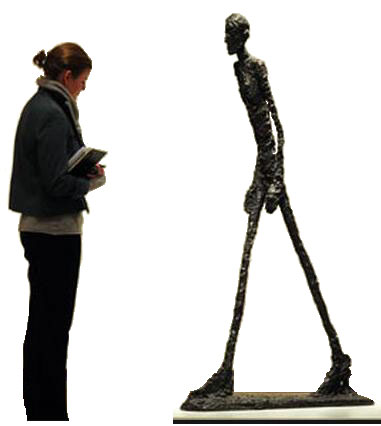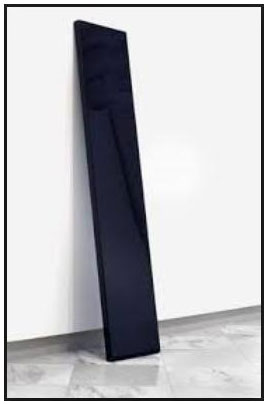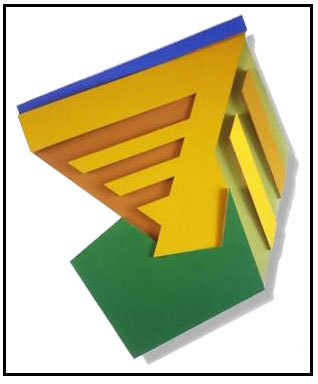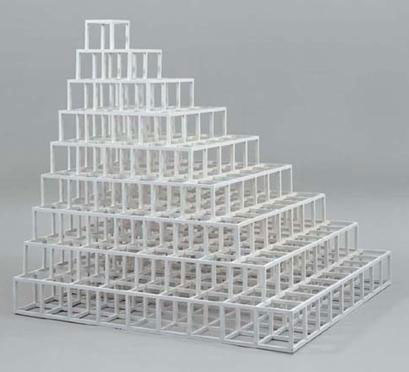MINIMALISM (c.
1960-1975)
Minimalism was not only a reaction against the emotionally charged techniques of
Abstract Expressionism but also a further refinement of pure abstraction. It was an attempt to discover the essence
of art by reducing the elements of a work to the basic considerations of shape, surface and materials. In short,
Minimalism’s theme is “More is less. Less is more.”
ALBERTO
GIACOMETTI (1901-1966)
"Walking Man
I" (1960)
Bronze (Carnegie Museum of Art)
Sold for $104M in 2010 (anonymous buyer)

DONALD
JUDD (1928-1994)
“Untitled
(Stack)” (1967)
Lacquer on galvanized iron

JOHN
McCRAKEN (1934-2011)
Untitled slab painting
Resin and fiberglass sculpture

FRANK
STELLA (1936 – Present)
“Jarmolince” (1973)
Wall Relief – oil, fabric, felt, corrugated cardboard on shaped panel
(Leo Castelli Gallery, New York)

SOL
LeWITT (1928-2007)
LeWitt reflecting on his work: “The early ’60s was a pivotal time. The thinking
of minimalist musician John Cage derived from Duchamp and Dada. I was not interested
in that. My thinking derived from Muybridge and the idea of seriality, from music. I thought Dada was basically
perceptual, relying on the often outraged response of the viewer. Pop art was a legacy of this. I was not
interested in irony; I wanted to emphasize the primacy of the idea in making art. My interest, starting around
1965, was in building conceptual systems, which grew out of Minimalism. Basically it was a repudiation of
Duchampian aesthetics
Wall Floor Piece
#1 (1976)

"Wall Drawing #972"
Einstein Medical Center Montgomery, PA

Art after
Miniminalism
z
|